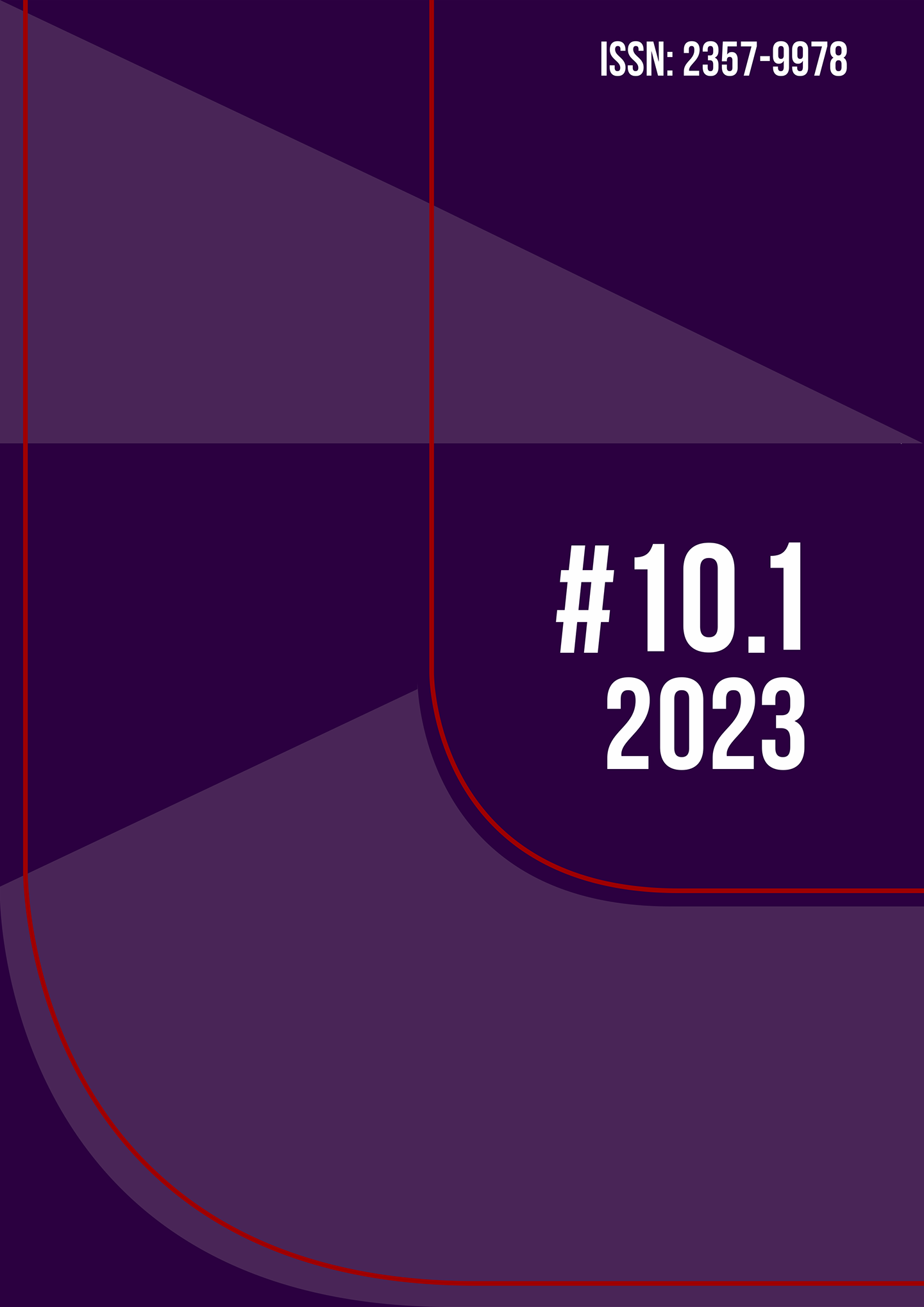Violin with "Sprezzatura": Considerations and Historical Evidences about the Art of Playing the Violin between c. 1550 and c. 1750
DOI:
https://doi.org/10.36025/arj.v10i1.31820Keywords:
Castiglione, sprezzatura, violin, chest position, 17th centuryAbstract
This article can be taken as an essay about the art of playing the violin between c. 1550 and c. 1750, connecting it to the notion of sprezzatura by Baldassare Castiglione (1478-1529). Using European musicographical and iconographical sources, like treatises, handbooks and paintings, we investigate the ways a violin was played with the emphasis on the adopted position used at that time. After classifying the different ways a violin was held and a definition about the idea of a sub-clavicular position, we look into its spotting a close-eye vision of its ideals, rationalities and practical aspects. The violin shifted from the arm towards the neck in a historical process that started in the mid-1500s and finished in the mid-1700s. From all those ways of playing, one of them was elected at that time as the more elegant and with sprezzatura – more glamourized and spread –, the chest position.
Downloads
References
ARBEAU, Thoinot. Orchésographie. 2. ed. Langres: Iehan des Preyz, 1596.
ABADIE, Lisandro; BRAITHWAITE, Tim; LOCATELLI, Andrés. Giulio Caccini’s Published Writings: Bilingual edition. Early Music Sources – PIE Series, Elam Rotem, Basileia, v. II, jul. 2021. ISBN: 978-2-8399-3334-6. Disponível em: https://www.earlymusicsources.com/pie. Acesso em: 9 nov. 2022.
BURKE, Peter. As Fortunas d’O Cortesão (1995). Tradução de Álvaro Hattner. São Paulo: Fundação Editora da UNESP, 1997.
BURMEISTER, Joachim. Musica Poetica (1606). Tradução para o inglês de Benito V. Rivera. New Haven; Londres: Yale University Press, 1993.
CACCINI, Giulio. Le nuove musiche. Florença: Giorgio Marescotti, 1602.
CASTIGLIONE, Baldassare. O Livro do Cortesão (1528). Tradução de Carlos Aboim de Brito. Porto: Campo das Letras, 2008.
de FER, Philibert Jambe. Epitome musical. Lyon: Michel du Bois, 1556.
FALCK, Georg. Idea Boni Cantoris. Nuremberg: Wolfgang Moritz Endter, 1688.
GWILT, Richard; SCHALLER, Irmgard. Traditions of Baroque Violin Playing. 2020. Disponível em: http://www.baroque-violin.info/. Acesso em: 9 nov. 2022.
HELD, Marcus. Francesco Geminiani (1687-1762): Comentários e Tradução da Obra Teórica Completa. Dissertação (mestrado). São Paulo: USP, 2017. DOI: https://doi.org/10.11606/D.27.2017.tde-27092017-101128. Disponível em: https://www.teses.usp.br/teses/disponiveis/27/27157/tde-27092017-101128/publico/MarcusViniciusSantAnnaHeldNeves.pdf. Acesso em: 09/11/2022.
HELD, Marcus. O violino e seu contexto na Inglaterra seiscentista. In: BARROS; FIAMINGHI; LUCAS (org.). Teorias, poéticas e práticas da música antiga. Curitiba: CRV, 2021. p. 111-130. ISBN: 978-65-251-0059-3. DOI 10.24824/978652510059.3.
LEMOS, Maya Suemi. Da poética e dos contrários: releituras no Combatimento di Tancredi et Clorinda de Tasso/Monteverdi. Cadernos do Programa de Pós-Graduação em Música, UNIRIO, Rio de Janeiro, n. 11, p. 8-28, 2008. eISSN: 2359-1056. Disponível em: http://seer.unirio.br/index.php/revistadebates/article/view/3936. Acesso em: 9 nov. 2022.
LEMOS, Maya Suemi. Madrigali Guerrieri et Amorosi: o livro oxímoro de Claudio Monteverdi. Terceira Margem, UFRJ, Rio de Janeiro, n. 25, p. 149-170, 2011. eISSN: 2358-727x. Disponível em: https://revistas.ufrj.br/index.php/tm/article/view/10800. Acesso em: 9 nov. 2022.
LOCATELLI, Pietro Antonio. L’Arte del violino, Op. 3. Amsterdam: Michel-Charles Le Cène, 1733.
LÓPEZ, Maria María José Pámpano. A técnica chin-off: técnicas interpretativas do violino nos séculos XVII e XVIII. Dissertação (mestrado). Porto: ESMAE, 2014. Disponível em: http://hdl.handle.net/10400.22/8846. Acesso em: 13 nov. 2022.
McVEIGH, Simon; HIRSHBERG, Jehoash. The Italian Solo Concerto, 1700-1760: Rhetorical Strategies and Style History. Woodbridge: The Boydell Press, 2004.
MERCK, Daniel. Compendium musicæ instrumentalis chelicæ. Augsburg: Johann Christoph Wagner, 1695.
MOZART, Leopold. Versuch einer gründlichen Violinschule. Augsburg: Johann Jacob Lotter, 1756.
PLAYFORD, John. A Brief Introduction to the Skill of Musick. 4. ed. Londres: John Playford, 1664.
PLAYFORD, John. The Dancing Master. Londres: Thomas Harper, 1651.
PRAETORIUS, Michael. Syntagma Musicum. v. 2. Wolfenbüttel: Michael Praetorius, 1619.
RICCI, Maria Teresa. Graça e Sprezzatura em Baldassar Castiglione (2003). Traduzido por: Cristiane Maria Rebello Nascimento. Limiar, UNIFESP, São Paulo, v. 2, n. 3, 2014. eISSN: 2318-423x. DOI: https://doi.org/10.34024/limiar.2014.v2.9266. Disponível em: https://periodicos.unifesp.br/index.php/limiar/article/view/9266. Acesso em: 9 nov. 2022.
RIEDO, Christoph. How Might Arcangelo Corelli Have Played the Violin? Music in Art, Nova York, v. 39, n. 1-2, primavera/outono, p. 103-118, 2004. Disponível em: https://www.jstor.org/stable/90012951. Acesso em: 9 nov. 2022.
SPEER, Daniel. Grund-richtiger Unterricht der Musicalischen Kunst. Ulm: Christian Balthasar Kuehnen, 1697.
ZWILLING, Carin. O Livro do Cortesão de Baldassare Castiglione: tradução e comentários de passagens a respeito da música. [S.l.], 2016, 1-19. Disponível em: https://www.researchgate.net/publication/311065938_O_Livro_do_Cortesao_de_Baldassare_Castiglione_-_traducao_e_comentarios_de_passagens_a_respeito_da_musica_por_Carin_Zwilling. Acesso em: 9 nov. 2022.
Downloads
Published
How to Cite
Issue
Section
License
Copyright (c) 2023 Luiz Henrique Fiaminghi, Vinícius Chiaroni, Alexandre Nanni (Autor)

This work is licensed under a Creative Commons Attribution-NonCommercial-ShareAlike 4.0 International License.

This work is licensed under a Attribution-NonCommercial-ShareAlike 4.0 International (CC BY-NC-SA 4.0) License.
Authors retain copyright, while licensing their work under a Attribution-NonCommercial-ShareAlike 4.0 International (CC BY-NC-SA 4.0) License.


 English
English Português (Brasil)
Português (Brasil)
